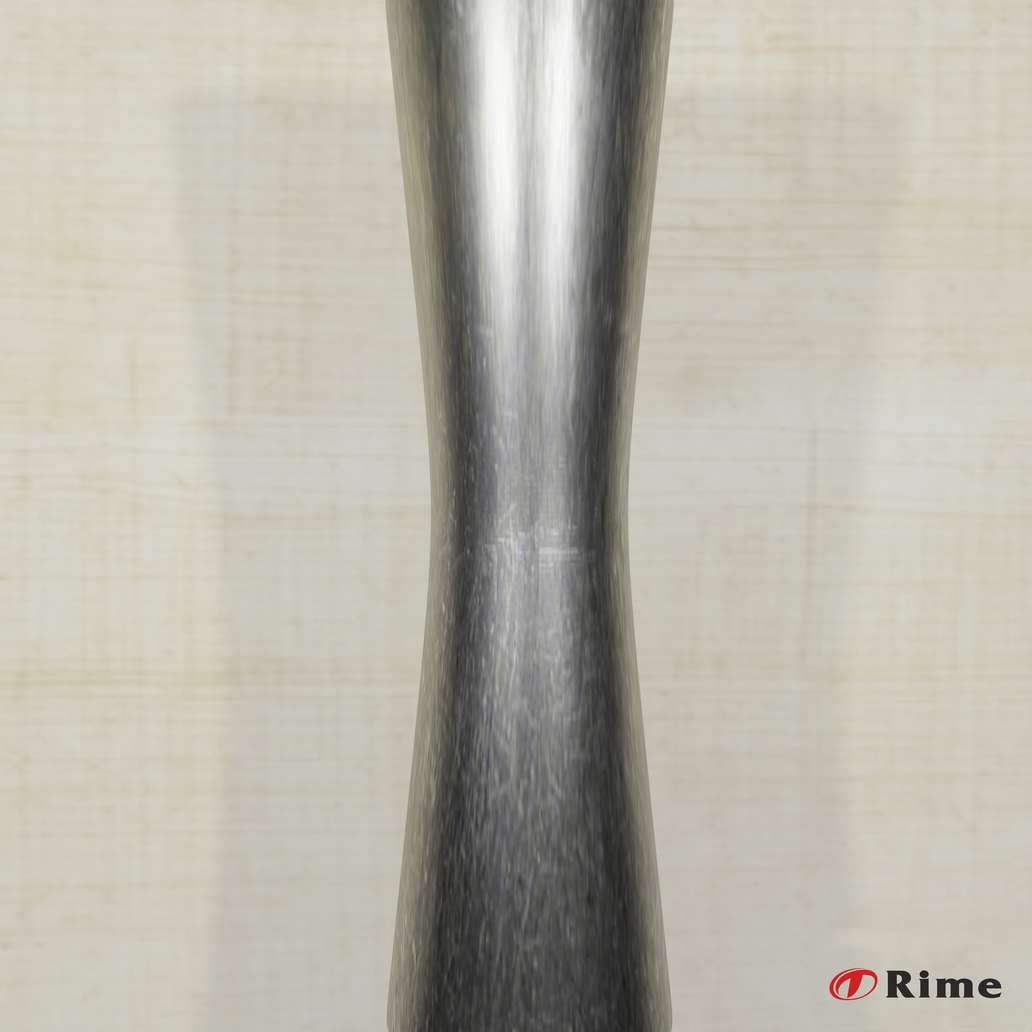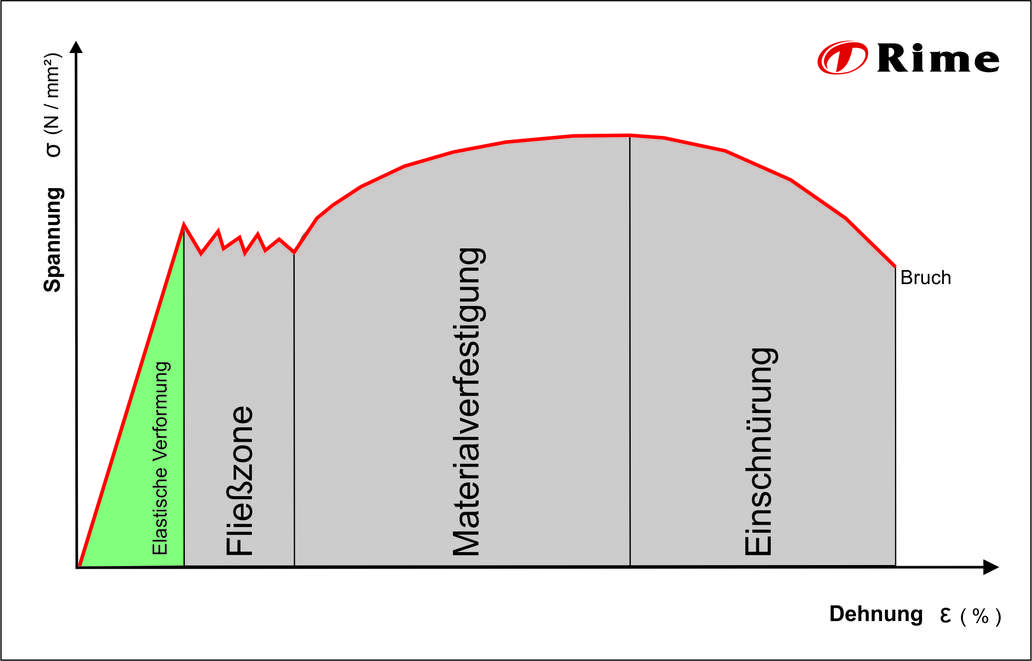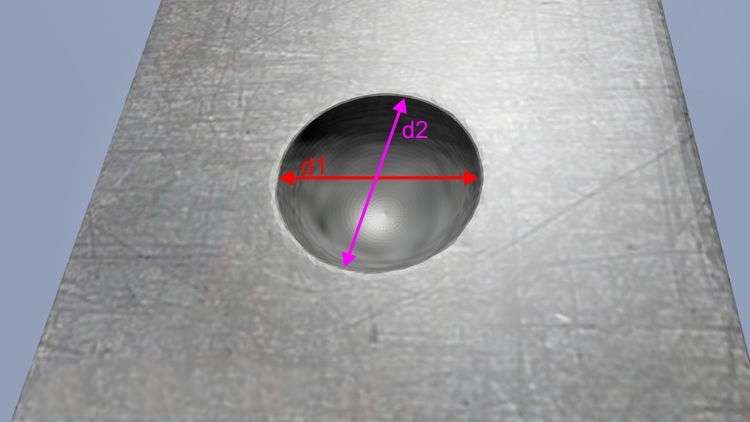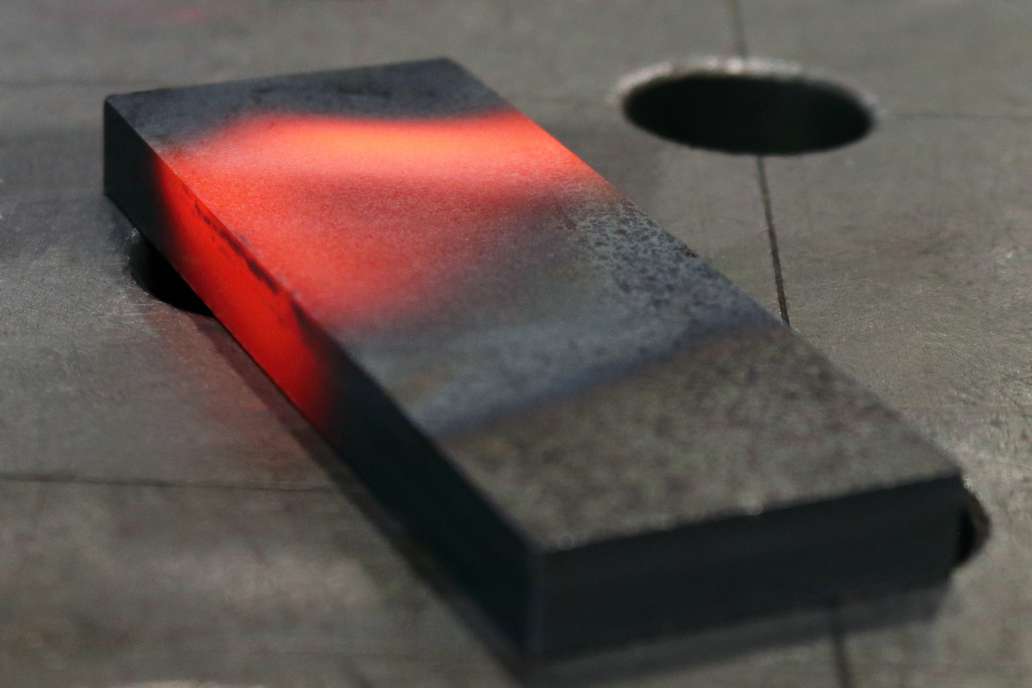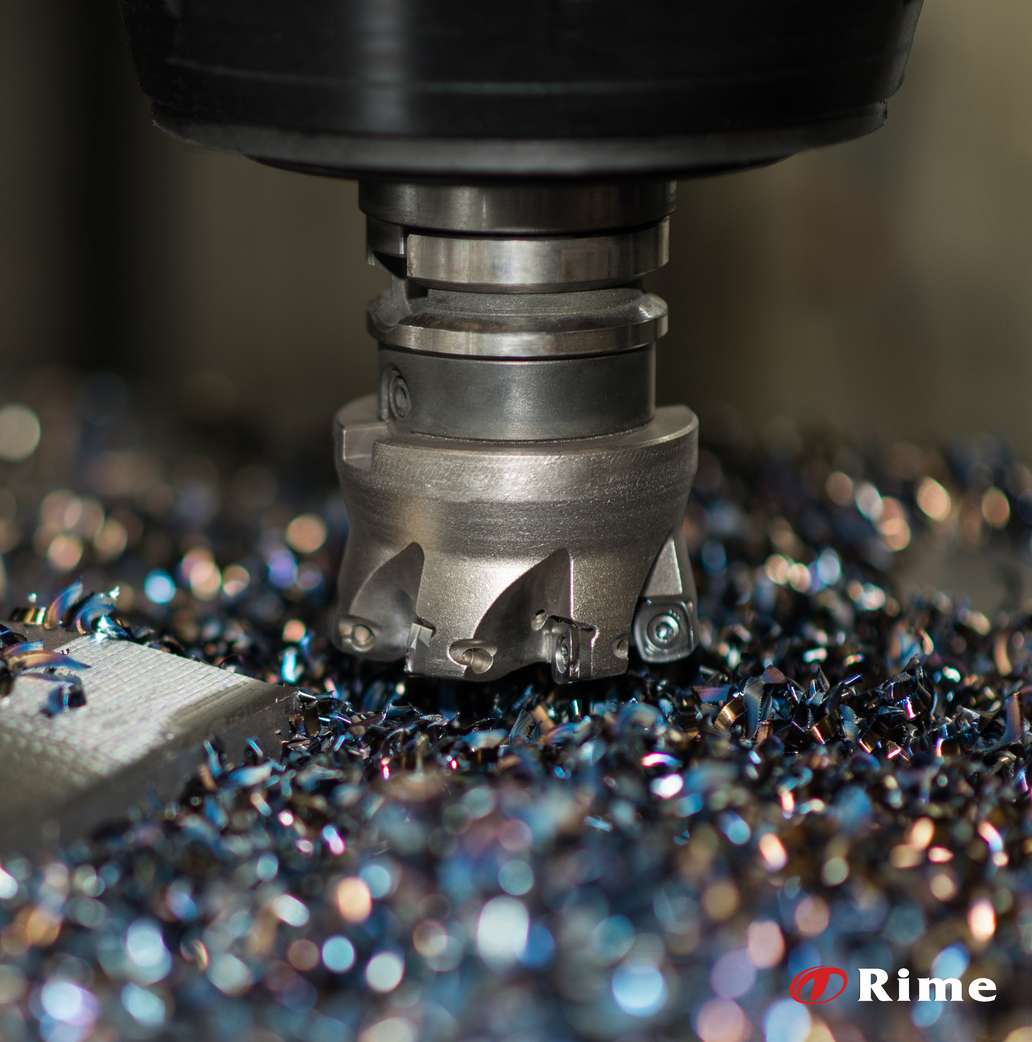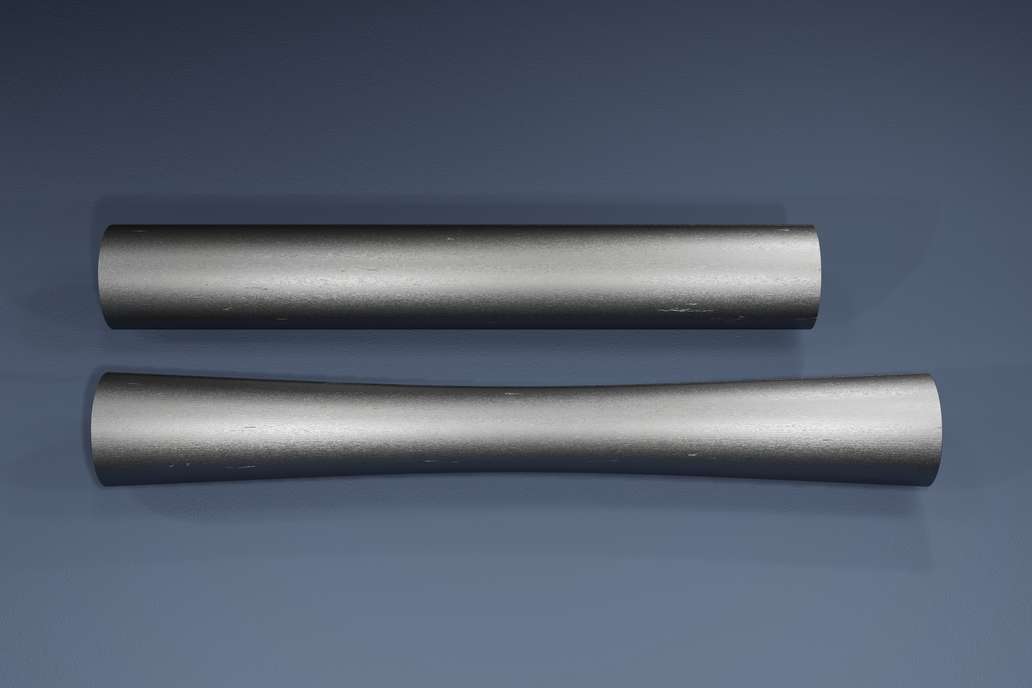Material Properties
Different materials react differently to external influences. The effects of water, heat or mechanical forces can influence materials unevenly. Whether a material is suitable depends on its individual properties. For this reason, a great deal of care is required when selecting materials.
Important material properties
There are a wide range of different material properties. The following list contains only the properties that are important for the machining of sheet metal:
- Strain
- Reduction of Area
- Elasticity
- Strength
- Hardness
- Notched impact strength
- Rust resistance
- Yield strength
- Wear resistance
- Scaling
- Heat resistance
- Machinability
Strain
Strain is an important material property that describes the mechanical properties of a material. Strain is a dimension of the change in length of a material when subjected to a tensile force. Strain can be linear or non-linear, which affects how the material responds to the load. Linear strain is the behaviour of a material that stretches constantly and uniformly when subjected to a tensile force.
This behaviour can be observed in many metals and plastics. In contrast, non-linear strain behaviour shows increasing strain when a tensile force is applied. There may also be a sudden failure of the material after a certain strain. This maximum strain until the material breaks is determined in the tensile test.
The strain of a material is generally considered in connection with the strength and elasticity of the material.
Reduction of area
Reductions of area are plastic deformations caused by the effect of tensile forces. If a workpiece is stretched, the material becomes thinner and thinner at a certain section. This tapering is called reduction of area.
The higher the reduction of area, the less tensile strength the material has. By examining the reduction of area, we can determine the condition of the material and whether it is suitable for a particular purpose.
If you stretch the workpiece further and further, it will break at this constriction.
Elasticity
Elasticity is an important material property. This characteristic value provides information on how much a material can be stretched without plastic deformation occurring. The workpiece would return to its original shape after the tension is removed.
This property is very important for applications where materials need to stretch to a certain extent in order to fulfil a certain function. Elasticity plays an important role in the manufacture and design of metal structures.
There are different types of elasticity in metals, such as the ability to deform under load and then return to its original shape. The different forms of elasticity are described in the article on the stress-strain curve.
Strength
Strength describes the mechanical resistance of a material that counteracts a mechanical load to prevent cracking, breaking or plastic deformation. If a material has a high strength, it is often difficult to process. High strength of metals can be achieved by adding alloying elements.
The strength depends on various factors, such as:
- Type of material
- Nature / condition of the material
- Type of stress (pressing, bending, pulling etc.)
- Time span of the mechanical stress
Basically, strength can be divided into the following types:
- Static and dynamic strength
- Breaking strength
- Single or multiaxial loading
- Heat resistance
Hardness
Hardness is a material property that defines the mechanical resistance of a material to the mechanical penetration of other bodies. The higher the hardness, the lower the material's susceptibility to scratches and wear.
The hardness of a steel plate can be changed by various influences in that it:
- is treated with heat (change in microstructure)
- is formed (change in structure)
- alloying elements are added or accompanying elements are removed (change in chemical composition)
Test method
Hardness is a parameter, not a physical quantity. It can be determined by various test methods. These vary depending on the material being tested and can include measurements of surface hardness, internal hardness and resistance to scratching and other types of wear. The most common hardness testing methods include ball indentation hardness testing and Rockwell and Brinell testing methods.
Notched impact strength
The notched impact strength is one of the resistance properties of a material. This indicates how much stress a material can withstand from a dynamic impact, for example from being hit by a hammer.
It is tested with a special testing device. For this purpose, the workpiece is notched, clamped in the testing device and exposed to heat or cold. Now an impact pendulum is dropped from a fixed height onto the test piece with the same energy until it breaks. The test always results in the breakage of the test piece.
The notched impact strength indicates how strongly the material can withstand and absorb forces without breaking.
Rust resistance
Water, humid room air, dirt and chemicals can react with steel and thus attack the material. Rust resistance provides information about how strongly the material can withstand the corrosive influences of water, salt water, dirt and chemicals.
The resistance to corrosion can be increased by various alloying elements. Chromium, nickel and vanadium significantly improve the rust resistance. From a chromium content of 13%, steel achieves corrosion resistance. By combining alloying elements, steel grades can be produced for use in the most adverse environments.
Forgeability
One way of working steel is forging. In this process, metals are deformed between two tools by means of pressure. This processing changes the microstructure of the material without loss of material. The metal is hardened. Forging can be done manually (open-die forging) or industrially.
Almost all metals and alloys can be forged. It is important that the carbon content does not exceed 2 %. Higher contents can no longer be plastically deformed. Alloying elements such as copper and sulphur have a negative influence on forgeability. Vanadium, on the other hand, can improve forgeability.
Yield strength
The material characteristic value yield strength determines the range up to which no permanent change, i.e. plastic deformation, takes place when the material is subjected to a tensile load.
The limit value is determined by a tensile test. Here, the material is stretched until it breaks. The yield point is the value at which a material starts to deform plastically and does not return to its original shape after the strain has ended.
Two yield strengths can often be determined for materials:
- Upper yield point: highest stress at which no permanent plastic deformation occurs.
- Lower yield point: lowest stress at which the material deforms and does not return to its original shape.
Wear resistance
The resistance of steel to mechanical abrasion represents the wear resistance or abrasion resistance. In order to increase the durability, the metal surfaces can be treated by coating processes such as hard chrome plating, and heat processes such as vacuum hardening or nitriding can also increase the durability of steel.
Scaling
Scaling occurs when metal is heated very strongly and exposed to oxygen. The metal corrodes and forms unwanted residues (scaling). For some products to be manufactured, it is therefore important to know the scaling resistance of the metal. This property indicates how much you can heat metal without causing undesirable reactions such as scaling.
Scale is removed mechanically, for example by knocking off, brushing, grinding or chemically by pickling.
Heat resistance
How strong a material is at higher temperatures is represented by its high-temperature strength. It is often important that steel does not lose its good mechanical properties even at high temperatures. It is therefore necessary to know the high temperature strength of the steels to be processed. Alloying elements such as cobalt, molybdenum and vanadium are used to increase the high-temperature strength of iron.
Machinability
Steel is often machined with cutting operations such as turning, drilling or milling. Therefore, machinability is a very important material property. The criteria of wear, surface condition, chip shape and cutting torque or cutting forces are important for machinability.
These criteria are important to determine the cutting data of the tool in terms of cutting speed, feed rate and depth of cut.
Tensile strength
If materials are subjected to tension through pulling, then the material tears or breaks at a certain force. The maximum value of the stress is the tensile strength. To determine the tensile strength of a material, tensile tests are carried out from which stress-strain curves are derived. If steel is subjected to tensile stress, it does not necessarily crack. However, it will stretch beyond its tensile strength, deform and become brittle.
